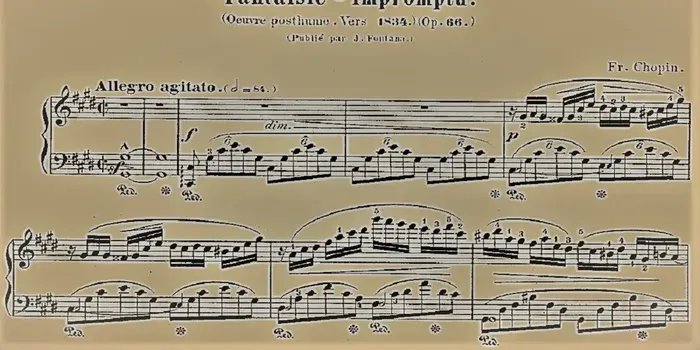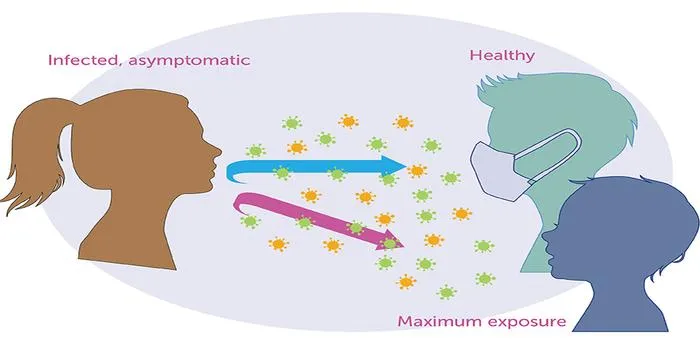- Home >
- Science
- > Exploration
The music of proteins is made audible through a computer program that learns from Chopin
A groundbreaking computer program transforms the complex structures of proteins into audible sounds by drawing inspiration from Chopin's music. This innovative approach uses machine learning algorithms to interpret protein sequences, translating their intricate patterns into harmonious melodies. By mapping specific amino acids to musical notes, the program creates a unique auditory experience that bridges the gap between science and art. This fusion not only offers a novel way to appreciate proteins but also aids in understanding their functions and interactions.

In a groundbreaking fusion of music and science, researchers have developed a computer program that translates the intricate movements of proteins into audible sound. This innovative approach not only enhances our understanding of protein dynamics but also opens new avenues for the intersection of art and science. By teaching the program to learn from the works of the legendary composer Frédéric Chopin, scientists have created a unique auditory experience that bridges the gap between molecular biology and music.
The Science Behind Protein Music
Proteins are the building blocks of life, performing a vast array of functions necessary for living organisms. Their complex structures and dynamic movements are essential for biological processes. Traditional methods of studying proteins often involve visual or computational modeling, but the introduction of sound adds a new dimension to this research. The program utilizes algorithms to translate the energetic vibrations and movements of proteins into musical notes, creating an auditory representation of molecular behavior.
Learning from Chopin's Melodies
Chopin's compositions are characterized by their emotional depth and technical complexity. By training the computer program on the patterns found in Chopin's music, researchers have enabled it to produce sounds that reflect the nuances of protein movements. The elegance of Chopin’s music serves as a model for the intricate rhythms and harmonies inherent in protein dynamics, resulting in compositions that are both scientifically relevant and artistically beautiful.
How the Program Works
The program employs machine learning techniques to analyze and interpret data derived from protein structures. Through a process known as deep learning, it identifies patterns and correlations between the movements of proteins and musical elements such as pitch, rhythm, and dynamics. The following table illustrates the key components involved in this innovative technology:
| Component | Description |
|---|---|
| Data Input | 3D structures and dynamic simulations of proteins. |
| Machine Learning | Algorithms trained on Chopin's compositions to recognize musical patterns. |
| Sound Synthesis | Transforming protein data into audible sound frequencies. |
| Output | Musical compositions that reflect protein dynamics. |
Applications in Science and Art
This innovative program has significant implications for both scientific research and artistic expression. By enabling scientists to "hear" protein dynamics, this technology can enhance our understanding of biochemical processes, leading to advancements in fields such as drug design and molecular biology. Additionally, the auditory experience provides a novel way for researchers to communicate complex data, making it more accessible to a broader audience.
On the artistic side, the program has the potential to inspire musicians and composers to explore new compositions based on scientific data. The interplay between science and art fosters creativity, encouraging collaborations that can lead to groundbreaking discoveries and innovative performances.
The Future of Protein Music
As technology continues to evolve, the possibilities for translating biological data into music are virtually limitless. Future iterations of the program may incorporate more complex compositions from various composers beyond Chopin, enriching the auditory palette available to researchers and artists alike. Moreover, advancements in artificial intelligence could lead to even more sophisticated interpretations of protein dynamics, providing deeper insights into the workings of life at the molecular level.
In addition, the integration of visual elements alongside the auditory experience could create multi-sensory exhibitions that enhance public engagement with science. Imagine an art installation where the movements of proteins are visualized in real-time while their sounds resonate in the background, creating a holistic experience that captivates audiences.
Conclusion: A Symphony of Science
The marriage of protein dynamics and music through advanced computer programming represents a remarkable convergence of disciplines. This innovative approach not only deepens our understanding of life at the molecular level but also enriches the world of music and art. As researchers continue to explore the symphony of proteins, the potential for groundbreaking discoveries and creative expressions remains boundless. The music of proteins, made audible through this program, serves as a reminder that the realms of science and art can harmoniously coexist, inspiring future generations to explore the beauty of both.
In this era of interdisciplinary collaboration, the exploration of sound as a medium for scientific data will undoubtedly lead to new insights and innovations. The journey of translating the language of proteins into music is just beginning, and its impact will resonate across both scientific and artistic landscapes for years to come.












